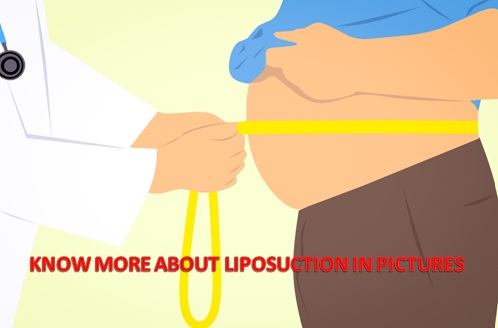It used to be the case that the perfect shape for a woman’s bust, waist and hip size was 36-24-36. If you were lucky enough to have this figure, then you were considered to be attractive and desirable by the opposite sex.
Today, however, this “perfect” shape has shifted to 38-22-34, and is what most people would recognize as an hourglass shape. In order to achieve this figure, many women are now turning to their plastic surgeon for liposuction.
Liposuction, also known as lipoplasty, lipo, suction-assisted lipectomy (SAL) or liposculpture, is a cosmetic procedure that’s designed to remove excess fat (i.e., adipose tissue) from the body to make it look more slender and improve its contouring.
Whilst there are many different methods available to carry out liposuction surgery, in general, most procedures involve making an incision in the skin through which a suction tube (cannula) is inserted.
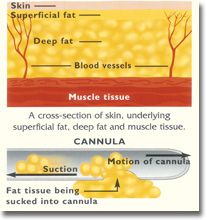
Excess fat is then extracted with the surrounding blood vessels, nerves and connective tissue being left intact. The result is a permanent and immediate change in the shape of the body.
Where Can Liposuction be Performed?
Liposuction can be used to treat many areas of the body such as the abdomen, back, buttocks, chest, knees, hips, neckline, chin, thighs and arms.
It is, however, not meant to make an obese person thin, as liposuction doesn’t remove enough fat to make a difference in cases of obesity. So if you are already very overweight, then you probably won’t gain much benefit from this procedure.
Instead, you would be better off undergoing abdominoplasty or thigh lift surgery. These body contouring procedures may, however, still use liposuction to produce more defined contours.
Liposuction also does not remove internal fat (i.e., visceral fat) around your organs (e.g., stomach and intestines), which is why it’s recommended to lose weight before your procedure if you wish to obtain optimal results.
When you have too much visceral fat it increases your risk of heart disease and diabetes, so getting rid of it will also benefit your health in addition to your waistline!
Finally, liposuction is not designed to address surface irregularities, so it won’t do anything to improve the appearance of dimples, stretch marks, acne scars, wrinkles or cellulite.
In some cases, however, a surgeon may be able to transfer fat from one region of the body to another, which may then result in an improved appearance of the skin’s surface.
How Much Fat is Removed?
How much fat is removed during liposuction really depends on how much fat you have and the overall build of your body.
For people with an average body type, for example, around 1 ½ gallons of fat would be removed. Whereas those with a smaller body type, can expect around half of this amount to be removed during the course of one procedure.
It is important to note, however, that a lipoplasty surgeon may not always be able to remove all of the fat you want removed in one session, as this could be dangerous to your health. So you could require multiple sessions in order to get the results you want.
Another point worth noting, is that not all the fat in one particular area will be removed completely, as there will still be some fat left behind so that your body retains normal looking contours.
Removing Stubborn Fat Deposits
If you have ever been on a diet before, then you may have found that no matter how much you dieted, or how much you exercised, you always seemed to have some stubborn pockets of fat that you couldn’t get rid of.
These excess fat deposits are largely a result of your genetics, and when they appear on your abdomen, hips, buttocks, thighs, knees or chin, you start to look overweight and there is very little you can do about it.
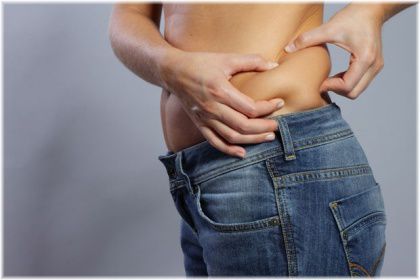
This is where liposuction comes in and why it can be so good for cosmetically sculpturing the body, as liposuction enables you to remove the fatty deposits which are difficult to get rid of on your own.
Once those fat deposits have been removed, the elasticity of the skin will then cause it to contract in the areas where the fat has been removed. It is this contraction that makes your body look more slender and more defined.
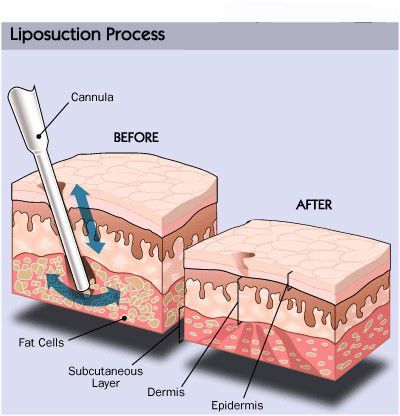
If you are over 65, however, you might not get as good results from liposuction as someone who is in their 30s or 40s. This is because as we age, the levels of elastin in the skin gradually decline which makes the skin less resilient.
So liposuction tends to produce the best results in younger individuals, but this does of course depend on the overall condition of one’s skin.
Is the Weight Loss Permanent?
Although the overall shape and structure of the body is largely determined by your genetics, the body you had as a child and teenager plays a major influence in determining the type of body you actually end up with as an adult.
Scientists now believe that the fat cells (i.e., lipocytes) which are created during a person’s childhood, stay with that person throughout their entire life.
Eventually, however, there comes a point when new fat cells stop being produced (unless you become obese) resulting in a body shape that stays more or less the same regardless of what a person does.
In other words, what science is telling us, is that if you were overweight as a child, then you are likely to be overweight as an adult because you have a lot of fat cells that allow you to put on weight easily.
The good news is that liposuction can remove these excess fat cells, which then makes it a lot more difficult for you to noticeably gain weight in the future.
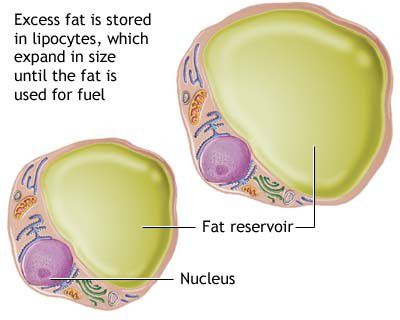
This is because fat cells don’t usually grow back in adults. So if you put on extra weight, then that weight will be added to other regions of the body. Regions where you may not have experienced weight gain before.
It’s important to remember though, that because fat cells expand the more you eat, you can still put on weight in liposuctioned areas. But that weight gain will be limited to your current body profile (i.e., the number of fat cells in one particular area).
Types of Liposuction Procedures
Over the past twenty years or so, advances in liposuction procedures have led to it becoming one of the most popular types of cosmetic surgery amongst young and mature men and women.
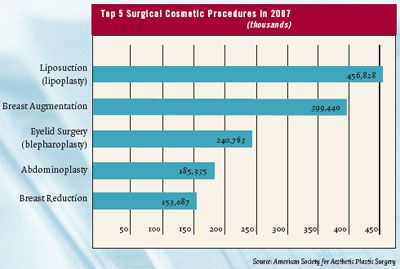
Today, there are now many different types of procedures available to choose from, all of which can provide excellent results providing that you are in the hands of a well-trained, qualified and experienced cosmetic surgeon.
What procedure you undergo largely depends on your unique requirements and the personal preference of the surgeon who will be treating you.
Below, you shall find a brief description of some of these different procedures and what each is designed to do:
Syringe Liposuction
Superficial syringe liposuction involves inserting a syringe with an attached tube into the area that is to be liposuctioned. The syringe is then withdrawn creating suction in the tube that allows for about 60 cc of fat to be withdrawn.
Syringe liposuction is simple, effective and results in a minimal loss of blood with rapid healing and recovery.
Ultrasonic Liposuction
Ultrasonic liposuction, also called ultrasound assisted lipoplasty (UAL), uses ultrasonic energy emitted from the cannula to liquefy fat so that it can be sucked up more easily.
Although this technique can be an effective form of fat removal, it may lead to fluid collections under the skin or burns to the skin itself. However, this is a fairly rare occurrence and most ultrasonic liposuction procedures are completed successfully without incidence.
Another thing worth being aware of when having ultrasonic liposuction, is that the surgeon will usually need to make larger incisions in the skin which subsequently increases the visibility of the resulting scars that develop.
External Ultrasound Assisted Lipoplasty
External ultrasound assisted lipoplasty (E-UAL) is similar to ultrasonic liposuction in the sense that it uses ultrasonic waves to liquefy fat.
But as the name suggests, this method passes these ultrasonic waves externally from the outside of your skin through the epidermis and dermis to liquefy the fat in the subcutaneous layer that sits underneath.
Not all surgeons find this technique to be effective, however, as some find that external application of ultrasonic energy does not make fat removal any easier compared to if no ultrasonic energy was used.
VASER-Assisted Lipoplasty
VASER (Vibration Amplification of Sound Energy at Resonance) assisted lipoplasty is similar to ultrasound assisted lipoplasty in the sense that it uses ultrasonic waves to emulsify (liquefy) fat cells before they are suctioned up.
When this technique is used, the ultrasonic waves can be emitted ether continuously or pulsed intermittently to deal with different areas of the body.
One of the main advantages of using this technique is that it tends to result in less tissue damage, bleeding, pain and bruising of the skin because it liquefies fatty tissue before it is extracted.
Power-Assisted Lipoplasty
Power-assisted lipoplasty is the preferred method of liposuction for most surgeons. The cannula can be moved forward, backward, side to side or even in a circular motion as a result of a motor attached to the handle of the suction tube.
Power-assisted lipoplasty makes removing fat from the body a quick and easy procedure with minimal blood loss. This makes it especially suitable for removing large amounts of fat such as in the thighs, buttocks or abdomen.
Micro Liposuction
Micro liposuction involves removing small amounts of fat deposits via injection sized needles. As a result, this type of liposuction tends to be most suitable for treating regions of the face such as the jowls, chin or neck.
In order to get the best results from this procedure, microliposuction requires specialized micro liposuction equipment, rather than just the standard liposuction equipment that is used for fat removal from the body.
If you are thinking of having microliposuction done on your face, be sure to ask your surgeon whether they have the correct equipment for microliposuction and how often they carry out the procedure.
Using incorrect equipment, or going to a surgeon who is inexperienced in facial liposuction, could result in you getting poor results from your treatment.
Note: Doctors do not do liposuction in the area beyond the sternomastoid muscles located on each side of the neck just below the jaw bone, as behind these muscles are vital structures of veins and arteries which supply blood to the brain.
Choosing a Liposuction Surgeon
Liposuction is an invasive form of surgery, and if carried out incorrectly, could result in serious complications or even death. For this reason, liposuction is not something that should be rushed into.
Instead, you should take the time to research the procedure that you want to have done, and then find the best surgeon who is able to meet your unique needs and requirements.
Doing so will help to minimize the potential dangers of liposuction, whilst also ensuring that you get the best results possible.
However, before you book an appointment with a surgeon, you may want to spend a few months dieting and exercising if you aren’t already doing so.
The reason for this is that the nearer you are to your ideal body weight, the better the results you are likely to get from your procedure.
You don’t have to be very slim, but being slimmer than you are now will help you to achieve more defined and tighter looking curves.
Below are some things that you should keep in mind when trying to find a good liposuction surgeon:
Selecting the Right Surgeon
You may find some doctors representing themselves as being qualified to carry out liposuction.
Even though by law they are technically allowed to do liposuction, in practice, the results you get from such surgeons are likely to be of far lower quality than what you would get from a surgeon who has been specifically trained in liposuction.
If your surgeon is a facial plastic surgeon, general surgeon, physician, general practitioner (GP) obstetrician or family practitioner, then they have probably had very little training or experience carrying out liposuction. In such cases, you would be better off looking elsewhere.
So when you meet with your surgeon, ask if they have been trained in liposuction and if they are a board certified cosmetic plastic surgeon. You are likely to get good results from such surgeons, and also from dermatologists who have undergone similar training.
Length of Training
Some plastic surgeons may tell you that they are trained in liposuction, but what they don’t say is that their training took place over a weekend crash course.
Unlike liposuction surgeons who underwent training in their residencies and fellowships, the weekend “qualified” surgeons are usually very inexperienced and are using you to test out and improve their skills.
So make sure that you ask your surgeon where they were trained and how long their training took place for, before you allow them to operate on you.
Before & After Pictures
Before and after photos are something that you definitely want to ask your liposuction surgeon to show you. They are your way of determining how good that surgeon is, and also how much experience they have.
Ideally, you should be looking for a surgeon who can show you lots of pictures, not just one or two. If the surgeon can only show you a few pictures, or no pictures, it most likely means that they are inexperienced and don’t do liposuction very often.
Looking at before and after photos will also allow you to determine whether or not you like the type of results that a surgeon produces.
Sometimes, you may find that what a surgeon considers to be an attractive looking result, isn’t necessarily what you consider to be an attractive looking result. So photos will allow you to see if your tastes match.
When looking at before and after liposuction photographs, take your time to look at them in detail and don’t just rush over them. Some of the things that you should be looking out for are:
Symmetry
Do both sides of the treated area look even? Or does one side appear asymmetrical to the other?
Note: Look closely at thighs to see if they look symmetrical and natural, as often more fat is removed from the back of the thigh because that’s where most of the fat accumulates.
Contours
Do the contours of the treated area look smooth and natural?
Skin surface
The skin should look smooth and uniform over the treated area. Look out for irregularities in the skin such as lumps or bumps.
Scarring
Can you see visible signs of scarring? If there are scars, are they large? Have they been well concealed? Would you be happy with that amount of scarring?
Previous condition
How much fat has been removed from the patient who you are looking at? Do you think the surgeon made a significant improvement with the patient’s body?
What Are you having done?
You should be looking at pictures of the procedure that you want to have done, and in the area of the body that you want to be treated.
Overall impression
Do you like what you see? Would you be satisfied if you got the same result?
Computer Body Modelling
Some liposuction surgeons will do a computer modeling of your body to give you an indication as to what sort of results you could get from your surgery.
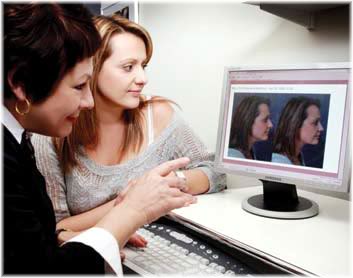
However, whilst this is certainly something that’s worth doing, it is important to remember that whatever you see on the computer screen is only an estimation of the results that you could get.
What these computer generations can’t do, is to show you exactly how your body and skin are going to react to liposuction. For example, if fat is not removed evenly, or uniformly, then you may have areas of the skin with lumps or shallow depressions.
You may even have one half of the body looking different from the other because different amounts of fat have been removed, something which is known as asymmetry.
Operating Facility

In order to keep costs down, you will find that most liposuction procedures are carried out in an outpatient setting rather than in a hospital.
This is fine, but you need to make sure that the surgery center is certified and that your doctor has privileges to perform lipoplasty in an accredited hospital.
An accredited surgery center has high standards which it must adhere to for patient safety and care. So if you are treated in such a facility, you can rest assured knowing that you’re in good hands and will be well looked after.
Type of Anesthesia
Liposuction is an invasive procedure, so unless you enjoy pain, you are going to require anesthesia. What type of anesthesia you get really depends on the type of procedure you are having done and how much fat will be removed. This is something that your surgeon should discuss with you.
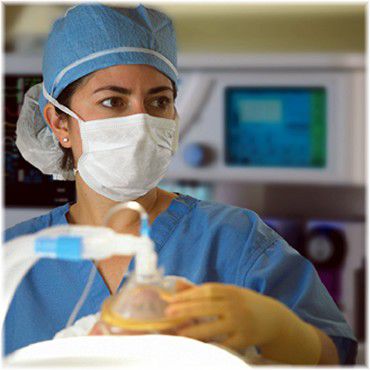
Generally, you won’t have to be sedated for minor procedures that only remove a small amount of fat, but you are likely to be sedated for more invasive procedures that remove large amounts of fat or if you are having liposuction in conjunction with another plastic surgery procedure.
If a plastic surgeon will be performing your liposuction, then sedation with general anesthetic will probably be used as this allows for lots of fat to be removed fairly quickly.
If a dermatologist is performing the procedure, they will usually use local anesthetic with or without a mild sedative.
Although this is a perfectly acceptable method for liposuction, the dermatologist won’t be able to extract as much fat as the plastic surgeon, and the patient is likely to experience more discomfort and sometimes pain.
Honesty
Before you undergo liposuction, be honest with your surgeon about your current state of health and lifestyle. Tell them about any drugs you use, whether legal or illegal, and any medical conditions that you have.

Failing to tell your surgeon about something important could lead to complications during surgery, one of which, as mentioned earlier, is death.
By being honest with your surgeon there won’t be any surprises during the procedure, as the surgeon will have prepared specifically to meet your individual requirements so that the risk of complications occurring can be kept to a minimum.
Risks & Complications
Liposuction is considered to be a relatively safe form of cosmetic surgery, but this largely depends on your surgeon and whether they are performing the procedure following safe guidelines.
The majority of complications occur due to too much anesthesia being used, too much fat and/or blood being removed, or inserting the cannula too far underneath the skin.
You should not experience any of these complications if you go to a respected plastic surgeon, as these sorts of mistakes are most likely to happen when liposuction is carried out by an untrained or inexperienced nurse or physician.
Short Term Risks
Some of the short-term risks associated with liposuction are:
• Discoloration of the skin
• Bruising
• Swelling
• Discomfort
• Pain
• Sensitivity
• Lumps/Irregularities in the skin
• Numbness
• Infections
• Pulmonary embolism/Blood clots
• Allergic reaction
• Skin burns
As liposuction is an invasive procedure, it will take your body a few days to recover from the trauma. So you can expect some pain or discomfort in the area that you have been operated on, and also a change in appearance of the skin such as bruising or swelling.
Bruising
Most patients experience some amount of bruising immediately following their procedure, although this should quickly settle down within a week.
Bruising is likely to be most severe in patients who are taking anti-inflammatory medication, or blood thinning medication such as aspirin. Such patients should, however, have been informed to cease taking their medication 2-3 weeks before their procedure.
Swelling
Swelling (edema) is another common occurrence after liposuction, but the majority of this should settle down relatively quickly providing you wear your compression bandages.
In some patients though, it may take up to six months for their swelling to completely subside.
In addition to bruising and swelling, you may also suffer from increased sensitivity or numbness in the treated area, but these side effects are temporary and soon pass unless a nerve has been permanently damaged.
Bleeding
Some amount of blood loss is normal during liposuction surgery, but fortunately, the amount of blood loss today is much less than it used to be ten or twenty years ago.
There are some instances, however, when the suction tube used to remove the fat from your body can cause prolonged bleeding, even after the operation is over. This could be a life threatening situation, especially if you have a blood clotting disorder such as haemophilia.
In most cases, bleeding from liposuction can be controlled quite effectively if it is dealt with promptly, although some people may end up requiring a blood transfusion if excessive blood loss has occurred.
Nerve Damage
Liposuction carries a risk of causing nerve damage. For example, if the ulnar nerve is damaged, a nerve which runs down the elbow, it could result in numbness to the fingers.
Fortunately, this effect is only temporary and should resolve itself within a few weeks. It is possible, however, for a permanent loss of sensation to occur.
Permanent Risks
Some of the permanent risks associated with liposuction are:
• Scars
• Lumps/Irregularities in the skin
• Asymmetry
• Pigmentation changes
• Damage to internal organs
• Tissue loss/necrosis
The main risks to be concerned with here, is the risk of scarring, as all invasive procedures leave a scar behind. When undergoing revision surgery, a surgeon will often use existing scars to insert the cannula so as not to create new scars.
How much scarring you have really depends on your procedure and the skill of the surgeon who operated on you. It is, however, difficult to predict how much scarring a person will get, because different people heal differently and so can develop different types of scars.
You can reduce the visibility of scars by ensuring that your wounds are kept moist during healing, such as by using an occluding ointment which contains lanolin (e.g., Infadolan). You may be able to further reduce the visibility of your scars by using a 1.0 mm dermaroller for 3-6 months.
Surface Irregularities
Another risk to be concerned with is that of surface or contour irregularities. This can occur due to the fat underneath the skin not being removed evenly, which can then result in lumps or depressions on the skin’s surface. It may also occur due to a surgeon using an overly large liposuction cannulas.
There is also a chance that if you have liposuction on either side of your body, such as outer thigh liposuction, that one side may look bigger, smaller or just different from the other. This is known as an asymmetry, and will require a revision liposuction surgery to correct if it’s bothering you.
Irregularities can also take the form of sagging skin. For example, if too much fat is removed from the upper part of the buttocks the buttocks can start to sag prematurely due to the excess weight in the lower part of the buttocks.
Damage to Internal Organs
The risk of damage to internal organs can occur if the cannula is inserted too deeply into the body, and this is also one of the most common causes of death from liposuction.
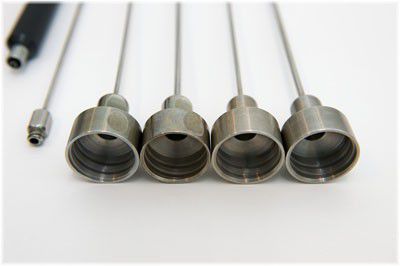
For example, when liposuction is used for breast reduction purposes in women, or on men with gynaecomastia, the cannula may penetrate the ribcage and injure the heart and lungs. Internal organs can also be damaged when operating on the abdomen if the abdominal muscle is perforated.
The risk of this happening though, is extremely low in the hands of a fully qualified and experienced surgeon, and obviously much higher in the hands of an inexperienced surgeon.
Note: When targeting the superficial layer (of the subcutaneous layer) of fat, a cannula with a 2 mm diameter is used. When targeting the deep layer, a cannula with a 6-8 mm diameter is used.
Death
Most deaths from liposuction are due to technical errors as a result of inexperienced physicians or surgeons carrying out the procedure.
Death can occur if the suction tube is pushed too far into the body and reaches the lungs or bowel, if the patient is given too much fluid, or if too much fat is taken out at one time.

Death can also occur if the patient is given too much anesthetic or suffers a severe allergic reaction to a drug or medication.
To reduce the risks of complications during your liposuction surgery, you are advised to have the procedure done with a board certified cosmetic surgeon who is well experienced in liposuction.
You should also look for a maximum of 5,000 cc of fat to be removed if you have an average body type.
Recovery
After you have your liposuction, your next focus is going to be on making a full recovery.
The extent of your recovery will be largely dependent upon the type of anesthesia you were given and how much fat was removed. However, as a general rule, the more invasive your surgery was, the longer your recovery period is going to be.
Below you will find some general tips, advice and guidelines on what you can expect to experience and how best to deal with your post-operative symptoms:
The First Day

In most cases, especially if you have been given general anesthesia, your plastic surgeon will request that someone looks after you for the first night after your liposuction surgery.
Note: Liposuction is normally carried out on an out-patient basis, and so no overnight is required.
Some of the roles of the caregiver will be to:
• Help you get back home
• Monitor your condition
• Help you get to the bathroom
• Give you pain medication & antibiotics
• Help you to change dressings
• Make sure that you are eating & drinking
The caregiver will also be on hand should any emergencies occur and you need someone to drive you to the surgeon or to your doctor. But if everything goes well, you will probably be able to look after yourself starting from day two or day three.
Dealing With Pain
Liposuction is an invasive procedure, so it’s normal to experience some amount of pain. But thanks to the pain medication which you are given, most liposuction patients report experiencing more discomfort (e.g., soreness) than actual physical pain.

It’s worth bearing in mind, however, that how much pain you experience will largely depend on what sort of procedure you had done. Some patients, for example, say that they feel no pain, whilst others say that they feel a lot of pain.
The amount of pain that you experience will also depend on your pain threshold, as some people are naturally able to tolerate higher levels of pain than others.
Patients typically describe the pain after liposuction almost like a dull aching sensation in their muscles, similar to what you would get after a really intense workout session. This can be uncomfortable, but it isn’t anything so severe that would result in you being bedridden.
In addition to physical symptoms, you may also experience some mental symptoms such as a mild depression or anxiety.
Some patients, for example, dislike being disrupted from their normal everyday routine because it makes them feel helpless and cut off from the world.
Physical Activity
After liposuction surgery, you will be advised to rest as much as you can for the first few days so that your body can devote as much energy as possible to the healing process.

The most difficult days will be those immediately after your surgery, because you will have bandages and dressings over your incision wounds.
During this period, it is important that you don’t do anything too strenuous to allow your wounds to heal properly, as otherwise they may tear open which could then result in bleeding or an infection.
After one or two days, you should feel well enough to have a shower and start walking around, but if you start to feel weak or dizzy, stop what you are doing and take some more time out to rest as you are probably trying to do too much too soon.
After one week, you will probably feel well enough to return back to work, but again, this depends on the extent of your procedure.

When you do feel well enough to return back to your normal routine, remember to take it easy and avoid doing anything too physically demanding as your body will still be healing from surgery. In particular, avoid lifting anything heavy and be careful around excitable pets or children.
If you need to drive a vehicle after your surgery, then make sure that you ask your surgeon beforehand how soon it will be safe for you to drive.
As you definitely don’t want to be driving if you are still feeling weak or feeling drowsy due to the pain medication that you are taking.
Judging Your Results
After having liposuction you won’t make a full recovery until about four to six months after your procedure, as during this time you will have swelling that will obscure your results.
For this reason, it’s best not to make a final judgement as to whether your liposuction was a success or not until you have made a complete and full recovery from it.
When you have made a full recovery, however, you may still feel disappointed with your results. Usually this is because not as much fat has been removed as you would have liked, or because you don’t have the body contours that you expected to get.
As should have been explained to you by your surgeon, there is a limit as to how much fat can safely be removed from the body at any one time. So if you still feel that more fat could be removed, you may want to consider having a second procedure.
For some people, more fat can’t be removed because their fat is what is termed as intraabdominal or visceral fat. This type of fat is what is wrapped around your organs, and can only be removed through exercising or dieting and not with surgery.
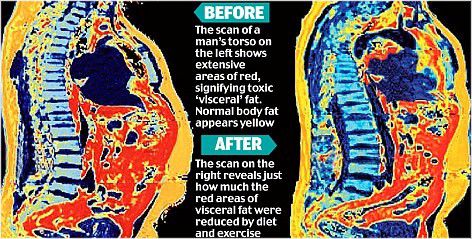
An unexpected side effect of liposuction that is worth noting, and also one that tends to catch many people off guard, is how the body now reacts to weight gain after being lipoed.
If you put on extra weight after your operation, for example, you may notice that you gain weight in areas where you never used to gain weight, such as on your buttocks rather than on your stomach.
This may prompt some people to want to undergo a second procedure to address a new problem area that has arisen.
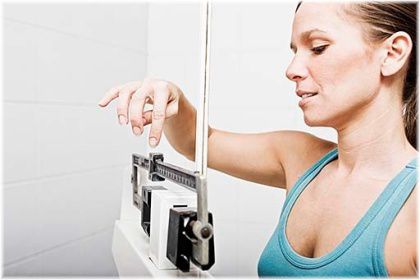
Overall, if you are unhappy with your results after liposuction, you can always go back and speak with your surgeon about it. Most people are happy with their results, and usually, those who end up unhappy went into their liposuction with unrealistic expectations.
In such cases, it is usually the fault of the surgeon for not telling you what you can realistically expect, and/or for giving you false hopes in an attempt to get you to have the procedure done with them.
Videos
Reviewed – 28th March 2016
